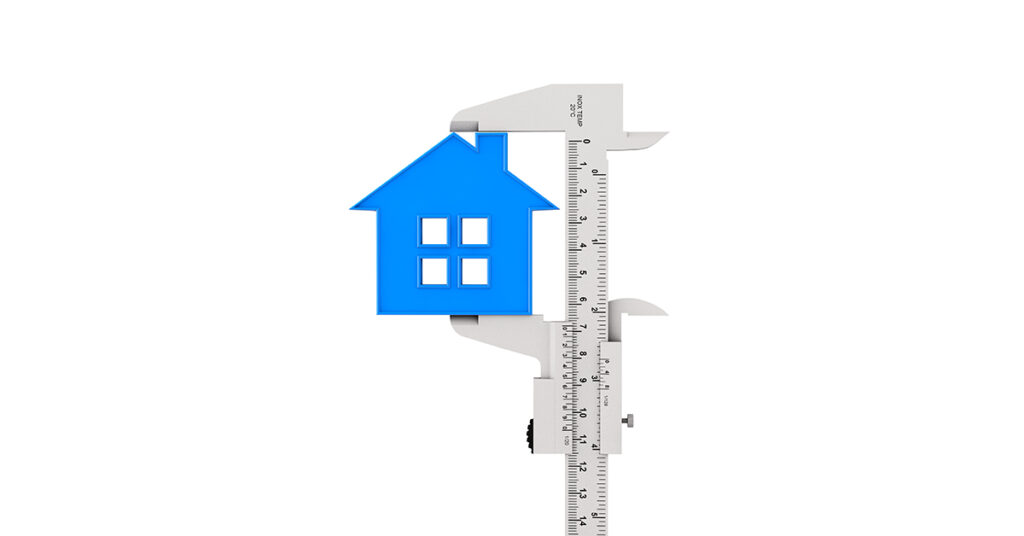Understanding That One Valuation Size Doesn’t Fit All
Although property value is just one step in the lending process, it might be one of the most important steps when making underwriting decisions. Today there’s a variety of different valuation models and options. Although they seem very similar, they’re all unique in how they arrive at a value and what kind of lending they’re utilized for.
Let’s discuss when to use each valuation type and the impact the models have on turn times, your bottom line, and how logic and automation help determine the best approach to take.
Here’s the list of valuation types we’re going to review; the AVM, the brand new QVM, desktop valuations, as well as hybrid and full appraisal options.
So the first product that we’re going to discuss as we go in order of complexity is an Automated Valuation Model (AVM). The AVM is a computer-generated valuation that utilizes mathematical modeling, and it’s combined with a database to formulate the valuation. The valuation locates sales within proximity to the subject property. It shows those recent sales and then develops a valuation based upon the closing date by using an algorithm.
So the sales are represented with the address and the property details, the closing date, and the listing information if that’s available. And then, the properties are shown in order of the closest to the furthest from the subject property.
The second AVM model that we will discuss is the Quantarium AVM. It is known as having the highest hit rate and accuracy of our AVM products. The finished product includes vast information regarding the subject property; it shows a photo of the dwelling if that’s available. It also consists of the same features as the AVM, representing recent sales in proximity to the subject property and property details, including sales price and closing date. This product also formulates valuation based on this data discussed above through an advanced algorithm. It also is delivered as an instant report to the lender.
The next valuation option we will discuss is a desktop valuation, which is completed by a provider’s in-house team of valuation specialists. It works by using the comparable search criteria, similar to the subject property, and then using selected sales chosen by the provider’s team members to achieve a confidence score of 80 or above. The product sets the value based upon those selected sales, again configured by an algorithm that considers the closing date, the property’s sales price, and then gives the lender a valuation value. Still, it also provides a low value and a high value. This report is usually available the same day it’s ordered.
In addition, some providers offer a desktop pro valuation. This comprehensive valuation mimics an appraisal as closely as possible for a desktop valuation. It is completed by the provider’s in-house team, usually with same-day service. It is created by using the same process as the desktop valuation. But the finished result is to provide an extensive and colorful display of photos of both the subject property and the selective sales when that’s available. And then, the report further goes into more of an appraisal-looking format with a columned format so that you can see the select property side by side.
The hybrid valuation is a lot like a traditional appraisal. Still, instead of the appraiser doing both the inspection and the report, it’s kind of split into two different parts where they’re going to be completed by another person. When the hybrid appraisal is used for the valuation, the third party will go to the property, conduct the physical inspection of the home, notating its condition, future size locations, and all the factors that are important to arriving at a property’s value.
And then, once that’s all done, it will get handed off to the appraiser, who will review everything and sign off on it. So these valuation models, the hybrid appraisal can vary from price to turn time. Still, because it involves two different parties, usually, it can get done a little bit faster than a full appraisal since the work is being split in half. And then it’s usually a little bit of a lower price point.
So for the appraisal options, there are drive-by appraisals and complete interior appraisals. Many lenders are using drive-by appraisals. This became important during the whole COVID 19 lockdown, not letting people in their homes. And so many lenders were satisfied with the drive-buy, the exterior only appraisal, without that actual appraiser going into the house. Still, some lenders require a full interior appraisal.
Not all valuations are created equally, and therefore they should not be considered the same. In the current lending landscape, lenders are starting to brace for margin compression. I hear this a lot, the margin compression, and we need to be as efficient as possible. Many of them are looking at valuations to see where they can utilize data and automation to cut costs and ultimately be as competitive as possible.
The valuation options we just explored can be used in a variety of ways. And all of them have a high level of accuracy. However, keep in mind that there is no magic number or right or wrong answer for a home value. Many lenders think an appraisal is the best method to arrive at a value. However, this method is still just an opinion of the appraiser, and it can vary from appraiser to appraiser, and there’s no perfect correct answer for each home value. AVMs utilize data from a handful of sources, as well as MLS listings and sold listings. For heavily populated areas, these models are highly accurate and reliable. But for areas that tend to be a little more rural or new construction areas may not have a strong data pool to pull from. So knowing when to use each model is critical.

Sara Keay Nakae is Vice President of Business Development at FirstClose. Sara has over 16 years of experience in FinTech serving the financial services sector in realtor and agency marketing for banks and credit unions, and extensive experience in the mortgage industry working with banks, credit unions and mortgage companies to deliver award-winning technology solutions and services. She has been a keynote presenter at leading industry events and conferences discussing FinTech and its impact on lenders businesses. Sara has deep industry knowledge in the financial digital space. Recently, Nakae launched and brought to market FirstClose Digital Lending Platform (DLP) which is a home equity point-of-sale tool and application management system fully integrated FirstClose ONE. Specific to home equity lending, lenders can drive prospective borrowers to the application portal where the borrower is able to obtain instant information regarding the equity in their home anytime, anywhere. In addition to providing real-time equity results, DLP can complete a full home equity application and obtain a credit decision in real time directly from the FirstClose ONE platform.



